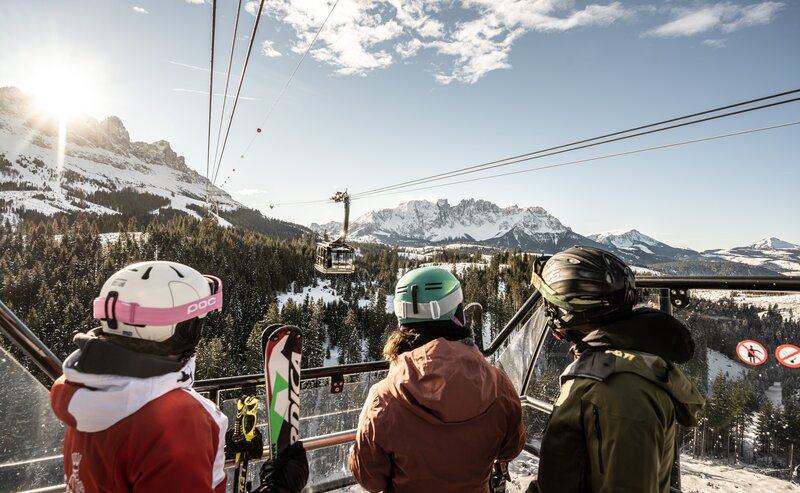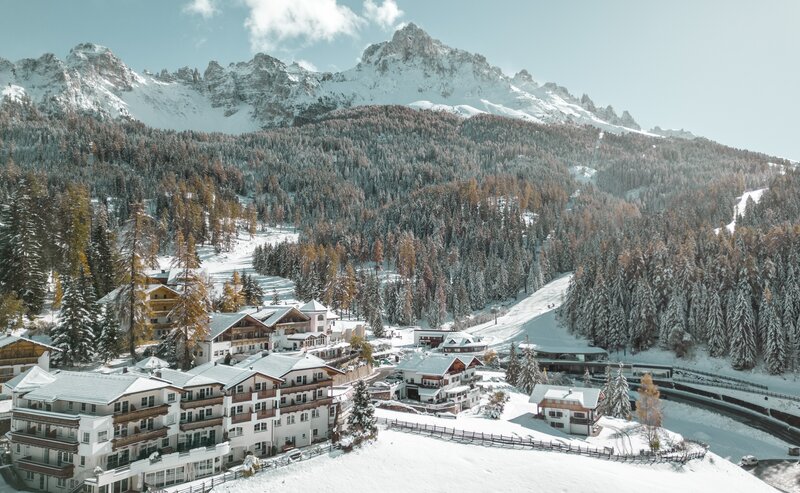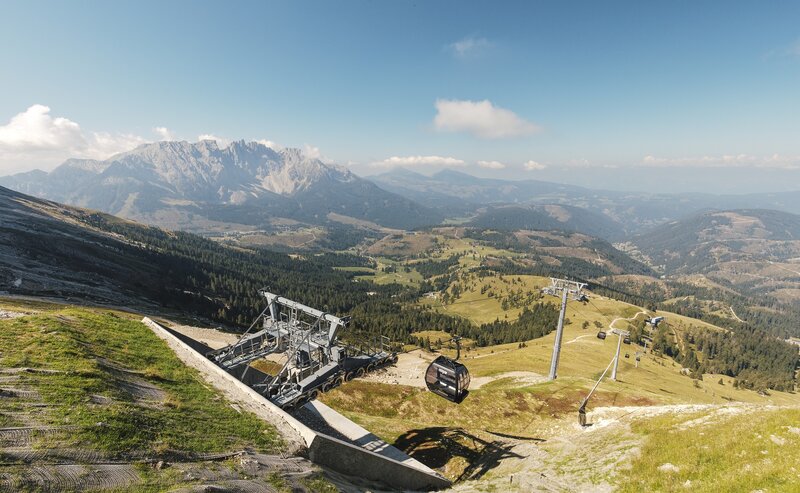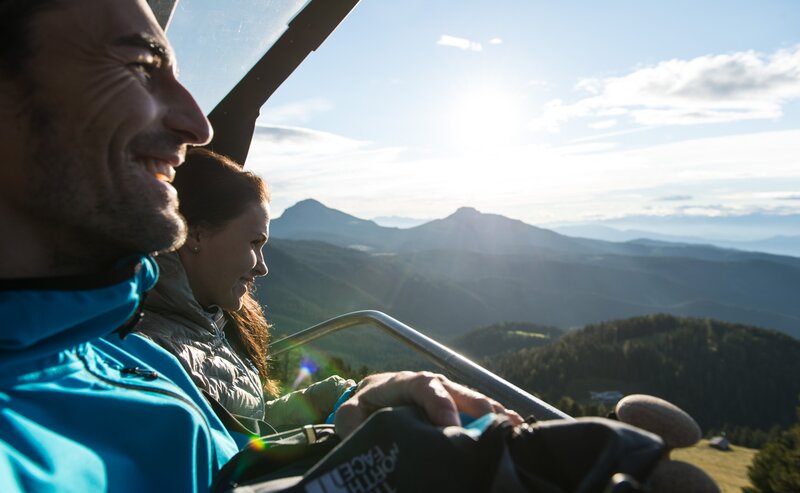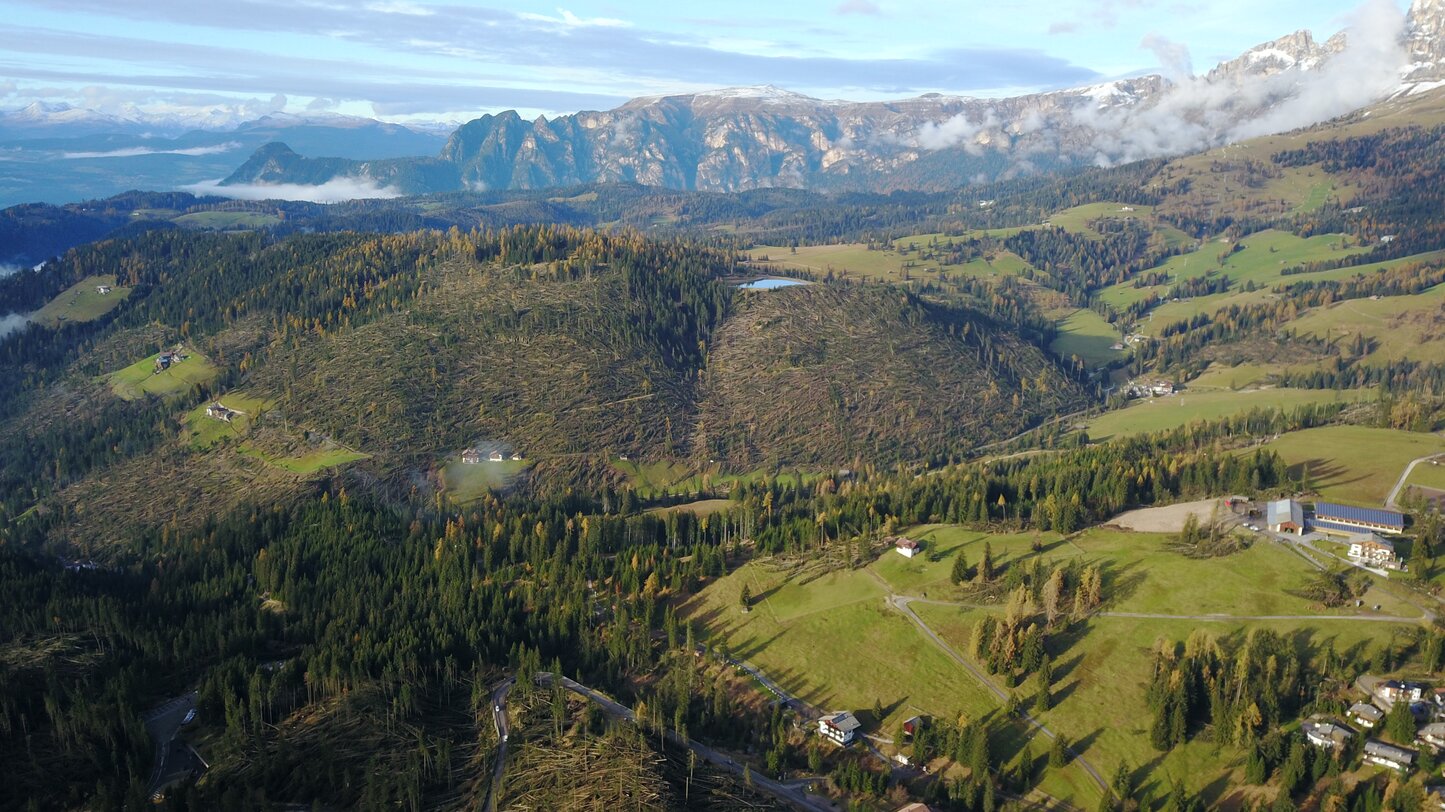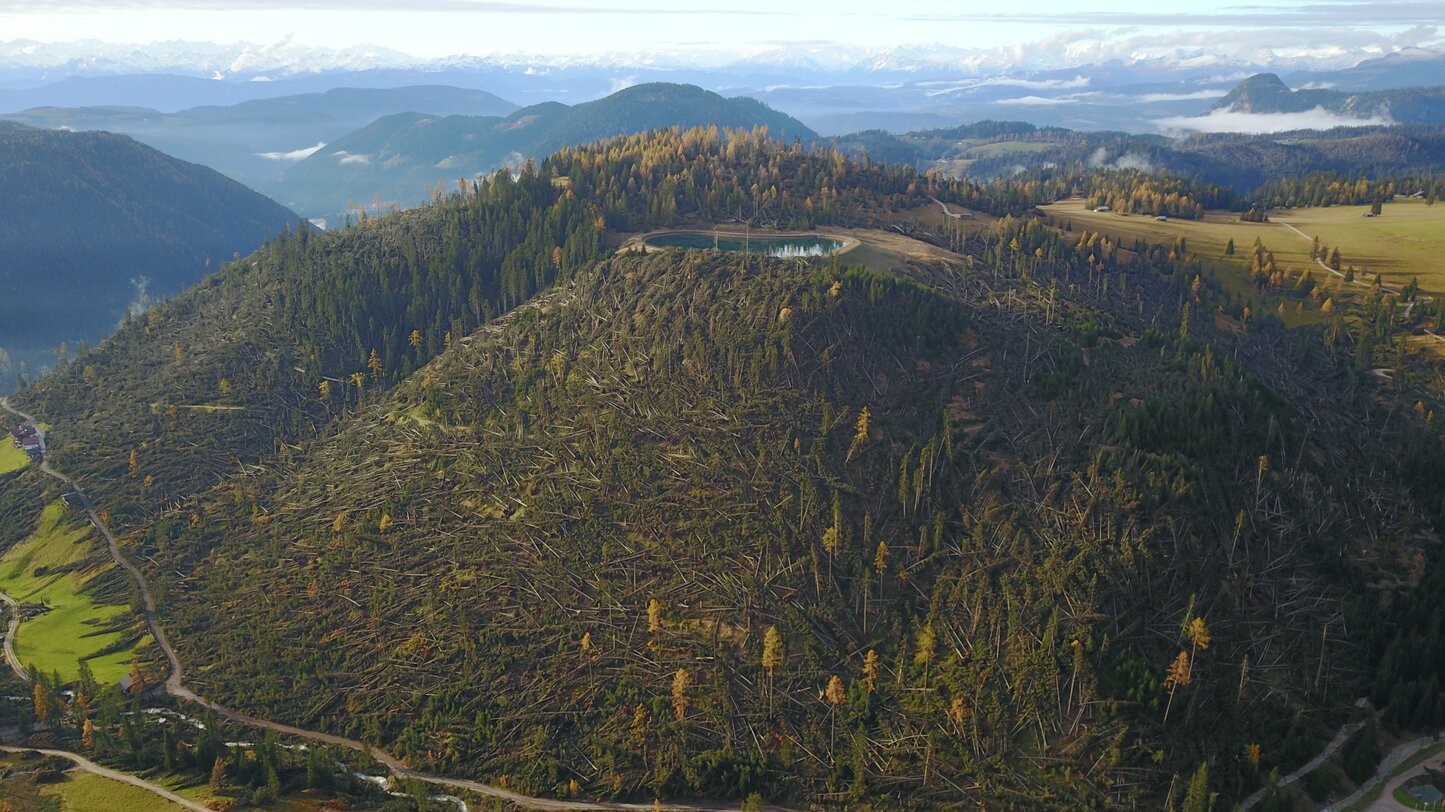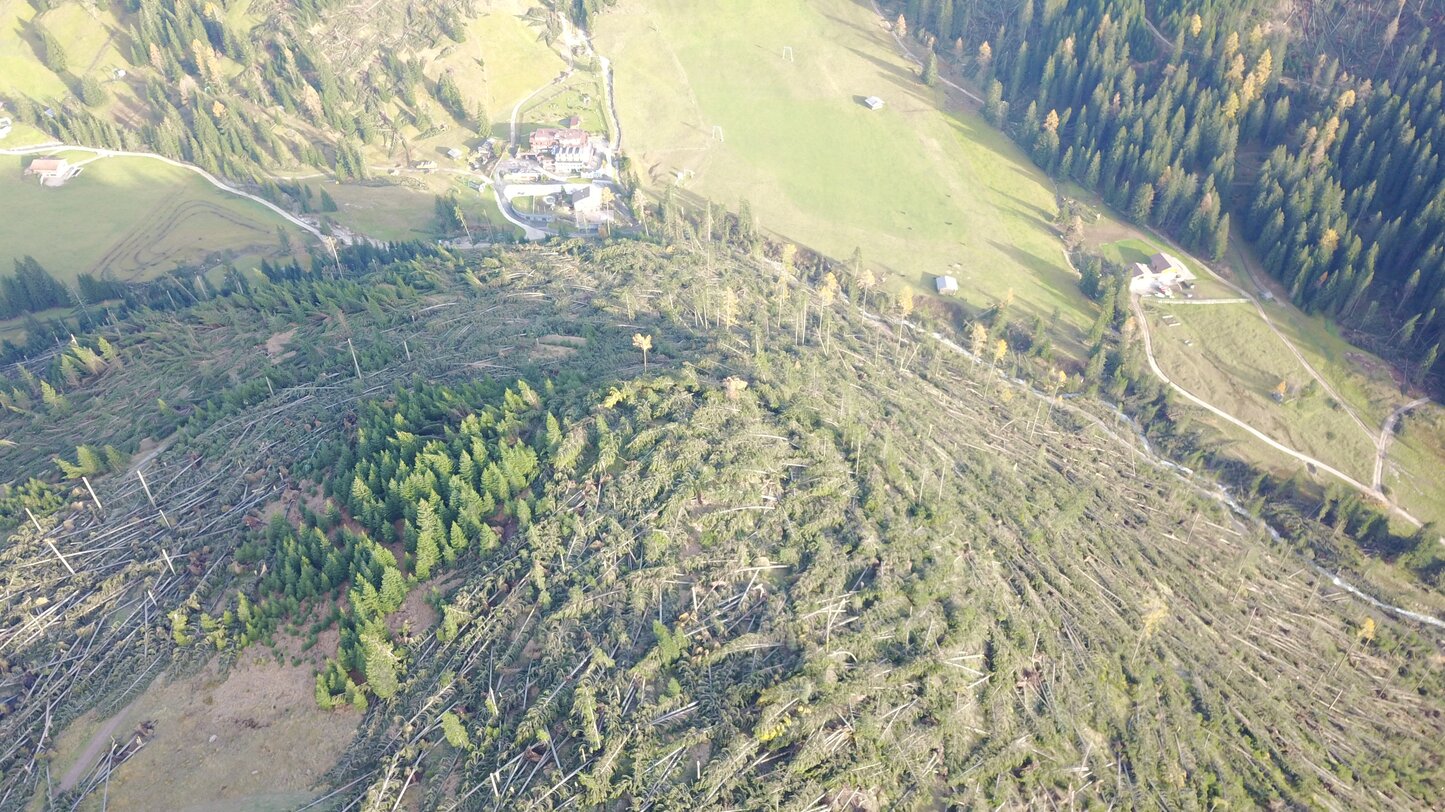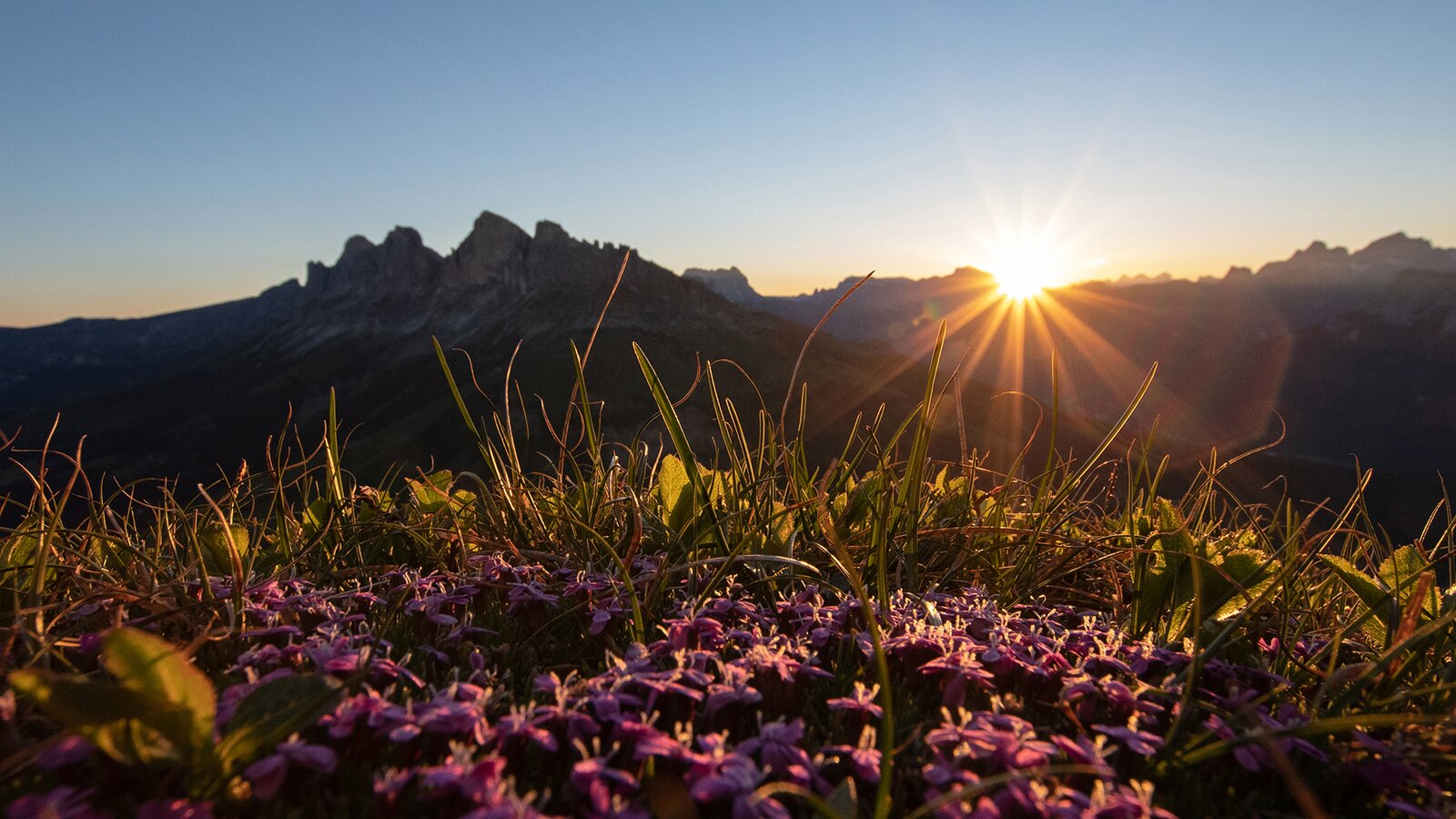VAL D’EGA AFTER THE STORM
Uprooted trees. Mighty trunks snapped in two like matchsticks. A trail of destruction as far as the eye could see. This was the scene that greeted Val d’Ega’s local population as they woke on the morning of 30 October 2018.
The arrival of Storm Vaia to Europe brought large variations in air pressure across the Alps, resulting in violent winds of up to 130 km/h that uprooted trees and snapped trunks in half. In Alto Adige, Italy’s northernmost province, 5,900 hectares of forest were affected – an area equivalent to 8,300 football pitches. In the woods and forests of Val d’Ega alone around 1000 hectares forest, the same as 1,300 football pitches, were torn down. This resulted in 500,000 cubic metres of wood (enough to fill 12,000 busses).
The main areas affected lay between Nova Levante and the Passo di Costalunga mountain pass as well as between Nova Levante and Aldino. The road connecting Nova Ponente to the Passo di Costalunga was closed for several days due to fallen trees and could only be re-opened thanks to the hard work of volunteers from the local fire brigade and the local community. The storm also resulted in damage to buildings and power cuts, though power was quickly restored thanks to a quick response by the authorities.
As soon as this once-in-a-century storm had passed, work began to clear away the damage left in its wake. This work continued on into the winter months. Forest roads destroyed or damaged by the form were repaired, improved,
widened and in some cases completely rebuilt using funds made available by the local forestry commission. This was an essential first step in the cleaning-up process since these roads were essential to bring in specialist machinery needed to clear away the fallen trees. These machines, including wood harvesters and tipper trucks, were sourced from sawmills in the region but also as far away as Germany and Austria. The branches and tree trunks covering the ground were quickly removed and transported away from the site.
Beating the bark beetle
One of the main reasons why it is so important to clear away the fallen wood as quickly as possible is a six-legged parasite particularly feared in the world of forestry: the bark beetle. As its name suggests, the bark beetle bores its way into trees and lays its eggs there. It reproduces especially quickly in dead wood, but soon spreads to living trees. Workers from the local forestry commission are currently hard at work setting up bark beetle traps in order to monitor the development and propagation of this small parasite. In cooperation with the University of Padova a study is being carried out into the population dynamics of bark beetles in order to restrict their spread as much as possible. The entire region which is affected is being closely observed in order to identify and remove such trees as quickly as possible.
The fast progress of the clearing-up work has been thanks to excellent cooperation between the three municipalities in Val d’Ega together with the local forestry commission, the local sawmills and the landowners affected.
The sawmills provide landowners with the money required to clear away the fallen trees and then process this wood before delivering it to customers throughout Europe. There is – fortunately – a strong demand in
Europe at the moment for freshly cut wood of this kind.
Looking to the future
The largest damage caused by Storm Vaia is the financial hit taken by the landowners. The sudden increase in the availability of wood has caused prices to fall by 50%, while the process of clearing away the wood is much
more complex, dangerous and therefore also expensive after a storm.
Some time has now passed since Vaia ravaged South Tyrol and other northern areas of Italy - in the meantime, the clean-up work has been completed: 500,000 cubic metres of fallen timber have been processed in Val d'Ega alone, and the entire network of hiking trails at medium altitudes (1,200-1,700 m) that were damaged by the storm is now accessible again for the many hikers: the forest and hiking trails have been cleared or completely reopened.
Mother Nature herself has defied Storm Vaia with impressive stoicism. She will take the time she needs to repopulate the areas of forest most severely affected with plants and trees. Indeed, the flora and fauna in these areas will actually increase in the coming decades thanks to the new plants growing there and the increased light levels resulting from the gaps left by fallen trees. Over time a new forest will grow and cover the area first with grasses and herbs, then with shrubs and light-demanding trees, deciduous and coniferous trees –until, one day, the stone pine tree will once again come to dominate.

